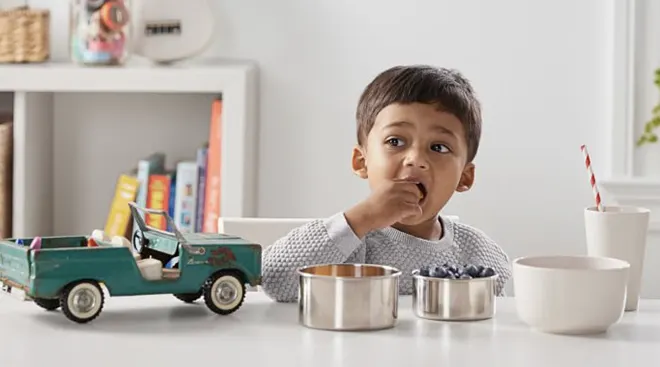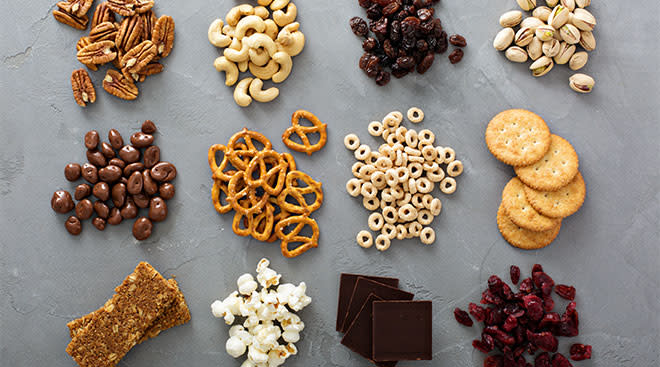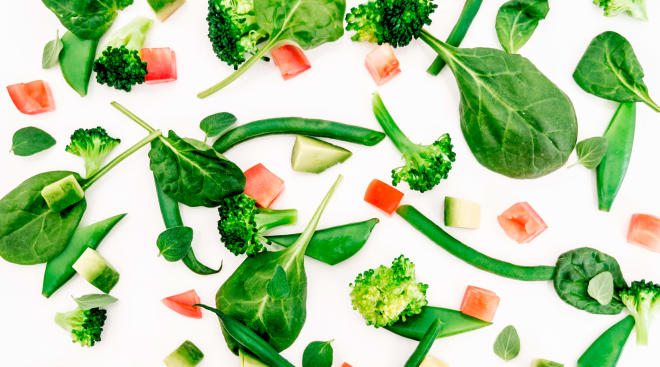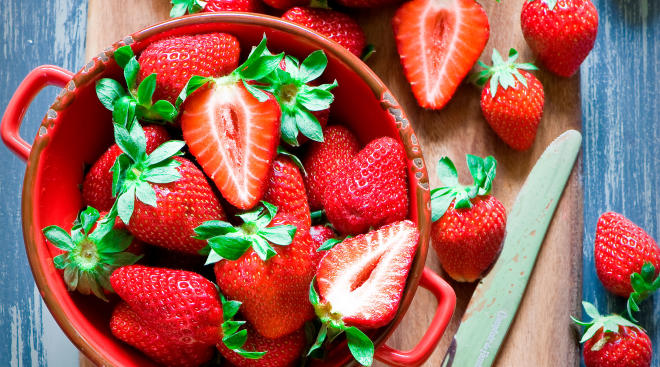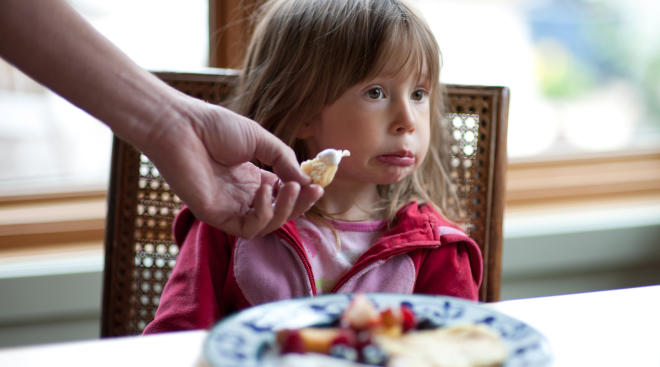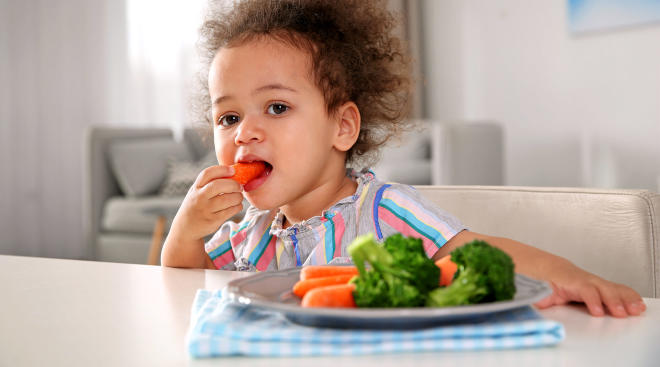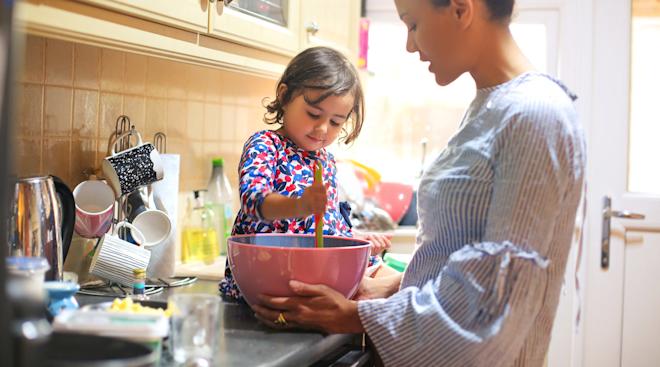How to Help Your Picky Eater Explore New Foods
It can be beyond frustrating to prepare a meal for a toddler, only to have them refuse it. But it’s also completely normal for your child to morph into a picky eater once they hit the toddler years. So what’s a parent to do? Here, experts share some insight into why your kiddo might be a picky eater—along with a few tips and tricks that could help them explore new foods.
There isn’t one standard, agreed-upon definition of picky eating, and people use the term to mean a variety of things, says Kary Rappaport, MS, OTR/L, SCFES, IBCLC, a pediatric occupational therapist and senior feeding therapist at Solid Starts. That said, picky eating is generally defined as “an eating issue that includes being resistant to trying new foods, refusing to eat many familiar foods and having strong food preferences,” she says. Picky eating can range from mild to severe, and Rappaport says experts often prefer to label milder forms of picky eating in toddlers as “typical toddler selectivity” while reserving the term “picky eating” for moderate to severe issues. Of course, many parents will use the latter phrase to describe their kids’ eating behaviors regardless of how mild or serious the issue may be.
Typical toddler picky eating starts around 18 to 24 months of age, says Rappaport. She says the research is mixed as to when most toddlers typically outgrow their picky eating phase, but it often occurs between the ages of 4 and 6. One study found that about 13 percent of children are still picky eaters at 6 years old.
There are a number of factors—running the gamut from nature to nurture—that can cause kids to become picky eaters.
“Most toddlers go through a period of selectivity or mild picky eating as they attempt to differentiate themselves from their parents and learn about how to navigate their world,” explains Rappaport. “Environmental factors and parental response can exacerbate this.”
According to the experts, some of the most common causes of picky eating are:
• An instinct for self-preservation. Some studies suggest that kids’ rejection of new foods—particularly leafy greens and bitter vegetables—is actually an evolutionary survival mechanism to keep small children from sampling poisonous plants, stemming all the way back to our hunter-gatherer days.
• A slowdown in growth. From birth to age 2, children undergo extraordinary growth—and when that growth rate naturally slows, so does a toddler’s appetite, says Adina Pearson, RD, a dietitian in Washington state. Parents often misinterpret this dip in food consumption as picky eating.
• A need for independence. As kids enter the toddler phase, there’s an increased desire for autonomy, Pearson explains—and exerting control over food is one of the easiest ways to claim some independence.
• A tendency to pick up bad habits. Studies have shown that the eating habits of caregivers and even peers have a noticeable impact on how and what kids eat. The more they see those around them refusing to try new foods or maintaining unhealthy eating habits, the more likely they’ll mimic those behaviors.
• A medical issue. Jennifer Anderson, MSPH, RDN, a registered dietitian and the founder of Kids Eat in Color, says there could be medical and physiological reasons behind some more serious picky eating habits. These may include past medical experiences, allergies, neurodivergence and sensory processing difficulties, and oral-motor challenges which inhibit the ability to chew or swallow properly.
The key to successfully helping your picky eater try new foods is to keep things light, says Rappaport. “The very first step is always to remove any pressure and stop any fighting that may be happening at meals,” she says. In other words, bribing, nudging and force-feeding almost always backfires. “Once that’s accomplished and a child feels safe and comfortable, we encourage parents to tap into the power of a consistent schedule and routine that prioritizes bringing the child to the table appropriately hungry.”
Pearson recommends following the Division of Responsibility in Feeding model developed by Ellyn Satter, a respected registered dietitian-nutritionist. Under this popular approach, parents determine what, when and where children eat, while the kids are responsible for how much they eat. “It’s about establishing that you’re going to have family meals and there’s going to be food on the table, but that it’s a child’s right to choose how much to eat of everything,” Pearson says. The Solid Starts model also recommends this approach.
Keep in mind that your child’s hunger level can change on a daily basis. “Appetites are going to come in waves,” Pearson says. “There are days when it seems like a child is a ‘breatharian’ and living off of air or eats like a bird. And then days when they suddenly have this huge appetite.” Kids are more in tune with their bodies than perhaps adults realize, and forcing them to eat when they don’t want to can backfire later on because it teaches them to bypass their own hunger cues.
When offering food to picky eaters, Melanie Potock, MA, CCC-SLP, a pediatric feeding specialist and coauthor of Raising a Healthy, Happy Eater. relies on what she calls “the three easy Es:”
• Expose. Keep exposing picky eaters to new foods not only by serving different things but also through experiences like gardening or going to the grocery store.
• Explore. Let kids explore food by allowing them to have fun and get messy with it. Don’t be shy about involving young kids in the meal preparation and cooking.
• Expand. Once kids’ food curiosity is established, Potock says, it’s much easier to expand on it and start introducing new foods.
How to introduce new foods to picky eaters
There are plenty of strategies for exposing new foods to picky eaters. Whatever you do, don’t get discouraged because persistence will pay off. Here, some expert tips on introducing new foods to picky eaters:
• Try “deconstructing” whatever meal you’re having. Anderson suggests serving the different components of a meal (for example, tacos) on your toddler’s plate. After a while, your picky eater might start putting them together on their own—and, in time, they might even be open to eating an actual taco.
• Offer small amounts. When introducing a new food to your child, try not to overwhelm them: Potock typically recommends offering a tablespoon or so of the food, at the most. (That way, you’re also not wasting food if your picky eater still isn’t interested.) You can also ask your child whether they’d like to use a big spoon or a little one, giving them more control.
• Give new foods more than one try. It can take multiple tries for a kid to tolerate certain foods—but getting to a point where your child genuinely likes it? That can take months. Many parents offer the food three or four times and then give up—but the trick is to stick with it. For Katerina K., mom to a one-and-a-half-year-old who’s a voracious eater, repeated exposure paid off. “I’ve just continued offering foods even if my daughter turns them away the first one or 100 times,” she says.
• Make small changes. Another tactic is to take something picky eaters actually like and then change just one thing about it—whether you offer a different shape, flavor or filling. Even getting kids to accept chicken fingers if they usually only eat nuggets can be a step in the right direction.
• Pair new foods with things they like. Instead of giving your kid a whole plate of something new and expecting them to eat it, pair it with foods you know they’ll enjoy, advises Potock. Emily P., mom of a 5-year-old, says her husband introduced a “strategy of threes” that has been effective. “At each meal, he offered our daughter one food she would definitely eat, one food she might eat (something she had tried and eaten before, but didn’t necessarily love) and one new food to try,” she says. “That took a lot of pressure off everyone, knowing that there would always be something on her plate that she’d happily eat.”
Mealtime tips for picky eaters
Still trying to figure out how to introduce your picky eater to new foods? Healthy meals for picky eaters begin with a welcoming and calm environment. Try these tactics from experts and fellow parents:
• Serve food family style. Try serving meals family style—meaning everyone dishes portions for themselves from the same platter. It’s a technique that’s worked well for Ashley J., a mom of three. “For the most part, the kids choose what they want and how much,” she says. “My 4-year-old is an adventurous and amazingly healthy eater. My 2-year-old is a terribly picky, anxious eater, but he loves dishing himself helpings. He doesn’t always eat it, but I consider him putting salad on his own plate—and occasionally trying it—a win. He’s expanded his palate this way, and while he still has a long way to go, I feel like he’s definitely made progress.”
• Serve multicourse meals. “I always offered food in courses, starting with what I knew the kids would want the least,” says Rachel F., mom to a 7-year-old and 15-month-old. “If it was the only thing on their plate, they seemed more apt to eat it instead of skipping it.”
• Learn to let things go. Kids feed off of our anxiety levels, so one of the best things parents can do is not make a big deal out of picky eating and relinquish some control, advises Rappaport. Shannon F., a mom of three, has found that “just not sweating it” has been the best thing for her family. “Picking what foods to offer my kids and when—but letting them decide what and how much to eat—is the only thing that’s saved me from the insanity of my middle child’s pickiness,” she says. At the end of the day, learning how to deal with picky eaters often comes down to understanding your child’s temperament. Some kids are simply more headstrong or fearful than others.
Meals for picky eaters
Breakfast, lunch and dinner ideas for picky toddlers are hard to come by. And because every toddler is picky in their own unique way, it can be hard to put together a picky eater food list. Rappaport says that rather than recommending specific foods, she encourages parents to add opportunities for independence and choice into meals by using a “build your own” strategy. Among other foods, you can have your toddler build their own:
- Sandwich
- Cereal bowl
- Pizza
- Smoothie
- Kabob
- Burrito
- Parfait
- Pasta
- Salad
You put out the potential ingredients, and your toddler can mix and match however they want, Rappaport suggests. “Anytime you give a hesitant child back some autonomy—with structure in place to help support them—you tend to get more buy-in, less refusal and a generally more enjoyable mealtime experience for all,” she says.
Exposing your toddler to new, textured and chewable foods—including as a baby—and eating the same foods as them (aka modeling) can reduce the risk of later picky eating, says Rappaport. “That said, there will always be some children who end up picky no matter how diligently their parent exposes them to new foods, model eating a variety of foods and make meals enjoyable—because the child’s own temperament, biology and experiences play roles as well,” she says.
While most of the time, picky eating is a phase that’ll pass, there are some instances in which it’s best to speak with your provider about picky eating. Potock says these include:
- A toddler who isn’t gaining weight
- A child who’s coughing or vomiting frequently during or after meals, or having difficulty swallowing
- Strong reactions to new foods being presented at meal and snack times (meltdowns, throwing foods, repeatedly protesting if favorites aren’t on the plate)
- Your child has a limited repertoire of what they’ll attempt to eat
In some cases, Potock says, picky eating might require professional support and feeding therapy.
Rappaport adds: “Anytime you find mealtimes to be persistently miserable for you and your child and nothing you do seems to change it, talk with your child’s doctor. If your child isn’t eating a wide variety of food textures and flavors by around 15 to 18 months, they refuse to come to the table, or if they’re dropping foods from their diet that they used to eat, it’s worth connecting with your child’s medical provider.”
With a few tips and tricks, you can help your toddler explore a wider variety of foods. But if there’s a more severe picky eating issue, be sure to check in with your doctor for advice.
Please note: The Bump and the materials and information it contains are not intended to, and do not constitute, medical or other health advice or diagnosis and should not be used as such. You should always consult with a qualified physician or health professional about your specific circumstances.
Plus, more from The Bump:
Jennifer Anderson, MSPH, RDN, is a registered dietitian and the founder of Kids Eat in Color, an authoritative resource that helps families feed their children. She earned her MSPH from the Johns Hopkins University School of Public Health.
Adina Pearson, RD, is a dietitian in Washington state.
Melanie Potock, MA, CCC-SLP, is a pediatric feeding specialist and coauthor of Raising a Healthy, Happy Eater.
Kary Rappaport, MS, OTR/L, SCFES, IBCLC, is the senior feeding therapist at Solid Starts. She is a pediatric occupational therapist, feeding and swallowing specialist and an international board-certified lactation consultant.
International Journal of Eating Disorders, Trajectories of Picky Eating During Childhood: A General Population Study, January 2015
Appetite, Picky/Fussy Eating in Children: Review of Definitions, Assessment, Prevalence and Dietary Intakes, December 2015
Canadian Journal of Dietetic Practice and Research, Influences on the Development of Children's Eating Behaviours: From Infancy to Adolescence, 2007
Solid Starts, What to Expect from Toddlers at the Table
Ellyn Satter Institute, The Satter Division of Responsibility in Feeding
Solid Starts, Preventing Picky Eating
Learn how we ensure the accuracy of our content through our editorial and medical review process.
Navigate forward to interact with the calendar and select a date. Press the question mark key to get the keyboard shortcuts for changing dates.


































